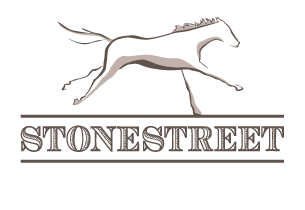It might seem senseless to mow our fields and paddocks. After all, it’s the famed Kentucky Bluegrass that feeds our horses and provides calcium for growing bones, but we mow from April through September each year. Why?
The grazing habits of horses are different from those of sheep and cattle. Horses graze pasture much shorter than cattle and will repeatedly graze the same area unlike sheep which graze a field evenly. Horses will not graze close to piles of their manure which allows areas of tall grass to develop; chain harrowing paddocks helps to alleviate this issue. Along with other pasture management techniques and low stocking rates, mowing helps us develop and maintain great grass for the following reasons:
- Not maintaining pasture keeps certain areas off limits to horses. The increased time spent grazing the same areas can cause over grazing, to a point where desirable plants may struggle to survive.
- Mowing evens out grass height. This promotes grass growth of all species, particularly during a period when the field is being rested, by allowing equal access to sunlight.
- Mowing encourages plants to produce more leaves and fewer stems. This develops thicker, more enduring ground coverage, which stands up better against horse hooves and is also more palatable.
- Mowing controls weed species. By preventing weeds from growing tall enough to seed we control them with their competitors, desirable grasses, and avoid using herbicides.
Rotational grazing has many of the same benefits as mowing due to the contrasting grazing habits of different species. We do not use this as part of our land management approach but if you would like to learn more about rotational grazing read this great article from The Horse: bit.ly/thehorsegrazing
Unlike ruminants such as cattle, horses should not eat cut grass in large amounts or silage. The fermentation process, which follows grass being cut, carries an increased risk of mold and bacterial toxins, which may cause colic.
